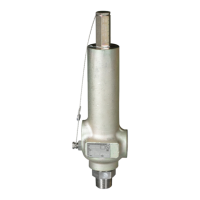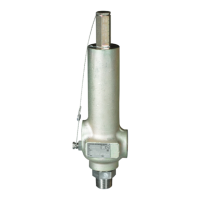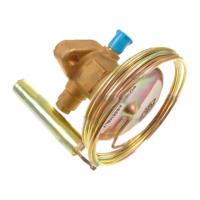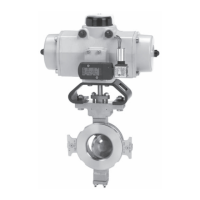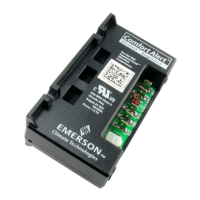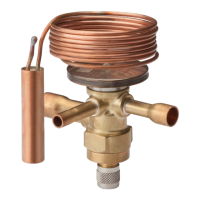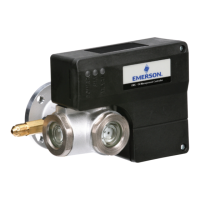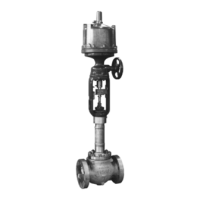2
1.2 Service applicability
Refrigerated or cryogenic storage tanks
(accurate low-pressure protection), natural
gas transmission and distribution, blanketed
vessels in the petrochemical, food and
electronics industries, ammonia, air blowers in
the waste water treatment plants and marine
(LNG and LPG).
1.3 Code applicability
The Series 9300 are designed to meet
therequirements of ASME UV Code Stamp, NB
certified capacity 15 psig and above, and API 2000.
1.4 Conversion
Valve conversions are defined as any change
w
hich affects critical parts and/or valve
nameplate data, from that which was originally
supplied by the manufacturer such as a change
in set pressure. Conversions, when required
by the owner/user, shall only be performed
by
the manufacturer, their appointed/authorized
assembler or repair center in strict
accordance with written instructions provided
by themanufacturer. Communication with
themanufacturer is critical when making
any conversion to ensure the converted
valve(s) provides the same safe, reliable
performance as the original valve supplied by
the manufacturer.
For conversion information on the Series 9300
Pressure Relief Valves:
www.valves.emerson.com
ANDERSON GREENWOOD SERIES 9300 PILOT OPERATED SAFETY RELIEF VALVES
InstallatIon and MaIntenance InstructIons
1 INTRODUCTION
1.1 Description of valve
The Series 9300 employs the highly successful
pressurized PTFE film seat, as well as
protected FEP diaphragms. The design allows
these valves to be used in the pilot operated
pressure relief mode and simultaneously
provide vacuum relief, either via weight loads
of the internals, or with a specific pilot control
of the vacuum opening. The Series 9300
was designed with a special studded inlet
connection to reduce the inlet profile, and
coupled with larger orifice areas, these valves
provide flow capacities as much as 45% greater
than the Series 90 valves. The Series 9300 is
a full body valve to pipe away the discharge if
required.
1.1.1 Pilot operated safety relief valve with
non-flowing modulating pilot
• 9340P - Positive pressure relief valve
• 9340C - Positive and negative pressure relief
valve
• 9304V - Negative pressure relief valve
Pilot operated valves use a pilot to control
pressure over a large unbalanced member in
the main valve, such as a diaphragm piston.
Thelarge overbalance means a much larger
force on top of the seat compared to process
forces pushing up on the seat. At set pressure,
the pilot relieves the pressure quickly,
permitting the main valve seat to open rapidly.
All of the pilots have the same construction,
except for the location of the connections
to the main valve diaphragm actuators, or
theconnections for the pressure sense.
Foreither the 9340P or the 9340C, thepilot
controls only the positive pressure relief.
Thenegative pressure relief is controlled by
theweight of the parts that move in the main
valve when it opens. In the 9304V, the pilot
controls thenegative pressure relief.
1.1.2 Pilot operated safety relief valve with flowing
modulating or snap action pilot
• 9390P - Positive pressure relief valve
• 9390C - Positive and negative pressure relief
valve
• 9309V - Negative pressure relief valve
Weighted-loaded and spring operated valves
open as process forces overcome downward
forces, with little flexibility to overcome
problem applications. Anderson Greenwood
pilot operated valves can be adjusted to open
with a rapid ‘snap’ action or modulating action.
Most applications are well served by the snap
action mode, with full opening at set pressure
and full reseating after a short blowdown.
However, some systems might best be served
by a proportional opening, whereby the valve
opens just enough to satisfy small upsets
and maintain constant system pressure, yet
still have the capability to reach full capacity
within 10% overpressure. The 9390C and 9309V
pilots have the same construction except for
thelocation of the connections for the pressure
sense. For either the 9390P or 9390C, thepilot
controls only the positive pressure relief.
Inthe9309V, pressure relief is controlled
by theweight of the parts that move in the
main valve when it opens. The pilot controls
the negative pressure relief on the negative
pressure relief valve. The Anderson Greenwood
9390 Series can be set for a snap acting or
modulating mode with a simple adjustment of
the external blowdown screw. No part changes
are necessary to change the operating mode.
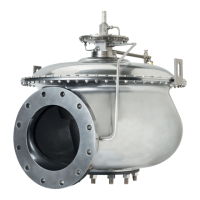
